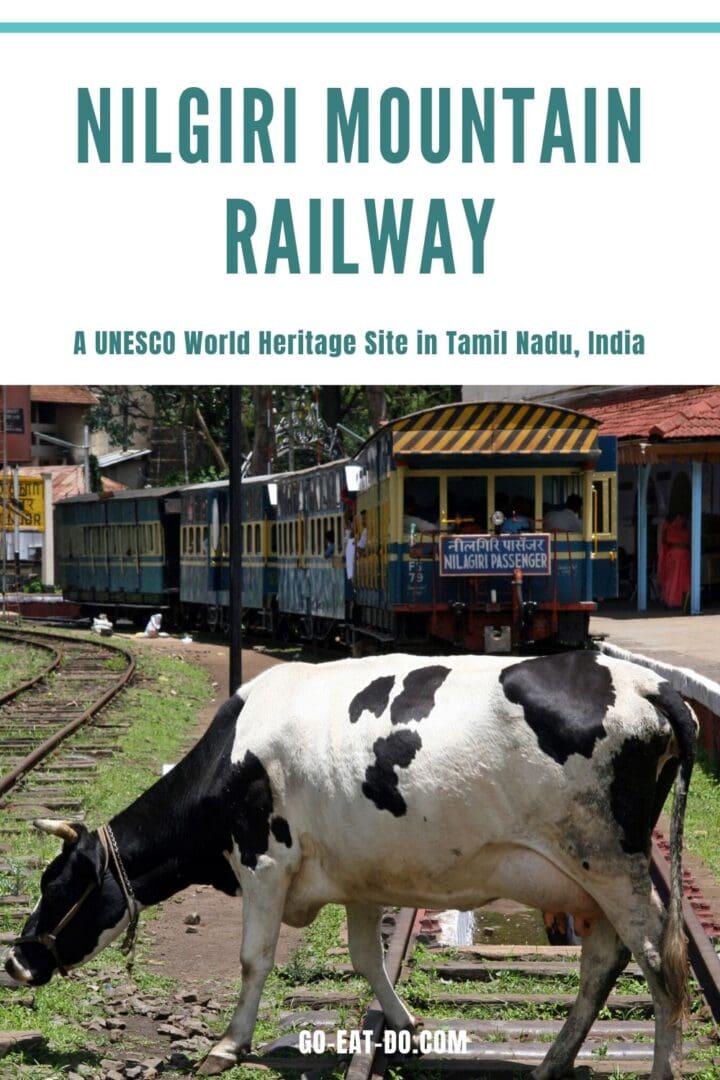Stuart Forster travels on a steam train operated by the Nilgiri Mountain Railway in southern India.
India’s most southerly state, Tamil Nadu, is home to 46 kilometres (28.5 miles) of railway that, since July 2005, holds the distinction of being a UNESCO World Heritage site. The Nilgiri Mountain Railway opened in 1899. It twists up from Mettupalayam, on the hot and dusty plain, into the lush countryside and altitude-induced coolness of the Nilgiri Hills.
Disclosure: Some of the links and banners below are affiliate links, meaning, at no additional cost to you, I will earn a commission if you click through and make a purchase.
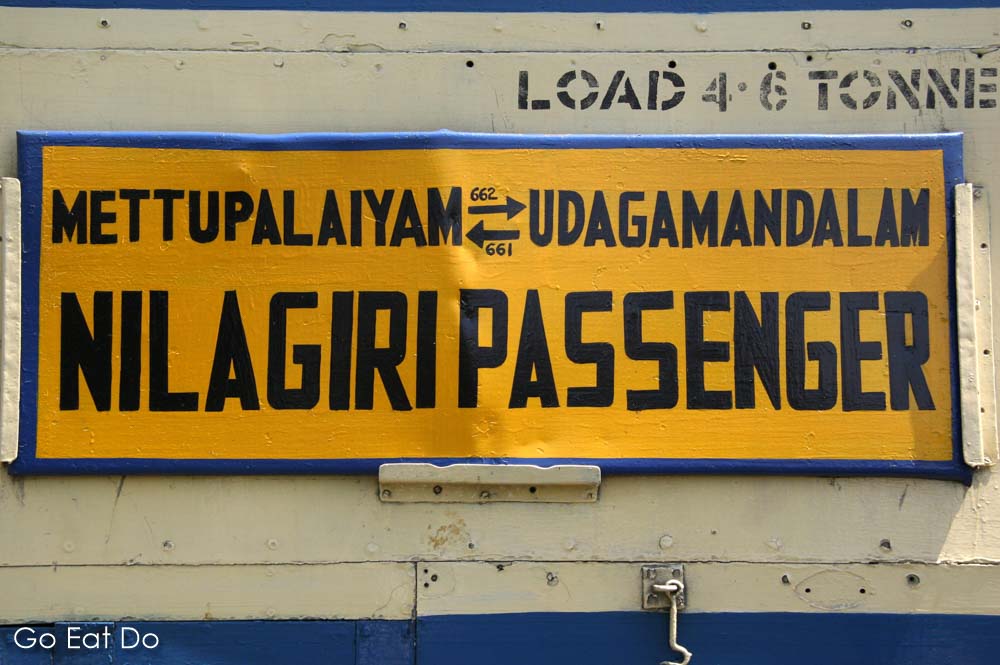
A scenic rail journey in southern India
Several stretches of Indian Railways’ expansive network attract fans of scenic rail journeys. A trip on the Nilgiri Mountain Railway is widely regarded as one of the world’s classic journeys.

The scenic landscapes of the undulating Nilgiris — meaning ‘blue mountains’ in Tamil — are just part of the attraction of travelling on the Nilgiri Mountain Train. The rolling greenery of the region’s tea and coffee plantations is a stark contrast to the plains around Mettupalayam.
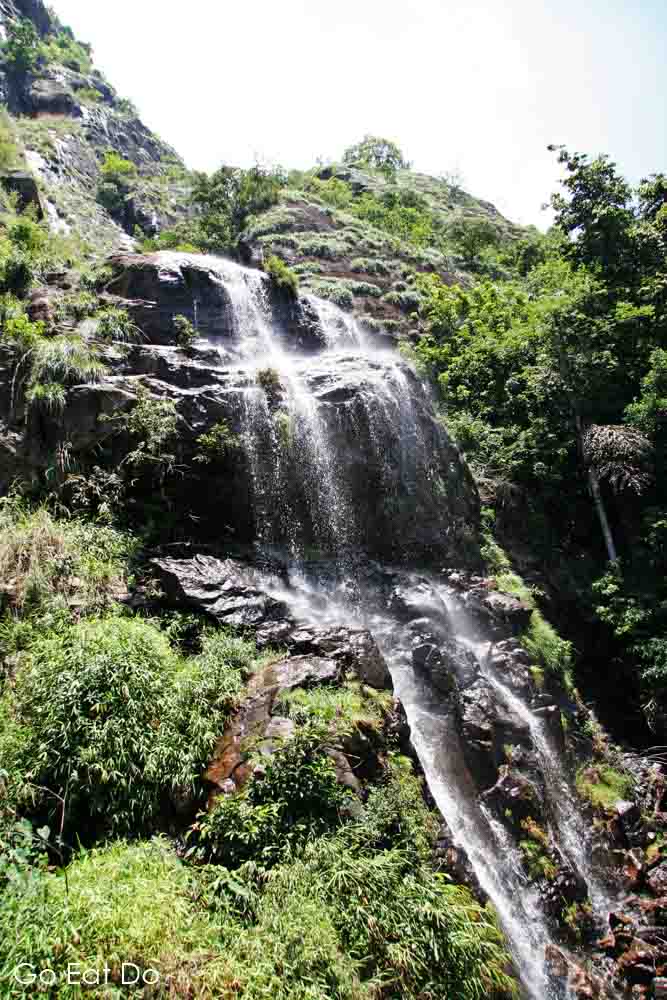
Traces of hill station life linger in the towns of Coonoor and Udhagamandalam (which the British found tricky to pronounce, so christened it Ooty; by which it is still popularly known). These are still popular retreats from the raging summer heat of April to June, the holiday months in which the train is most crowded.
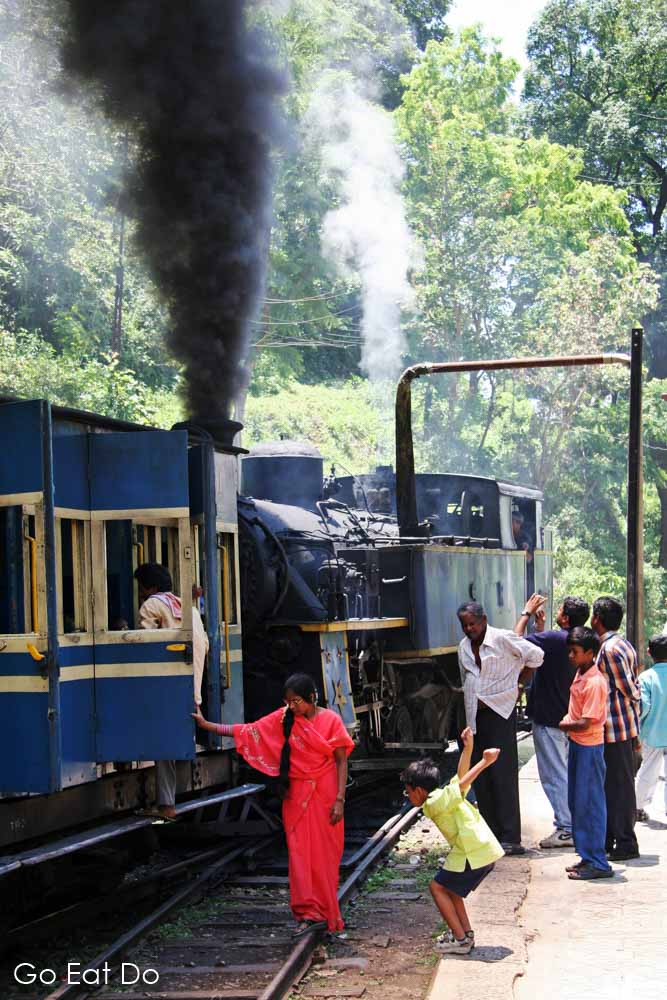
The Nilgiri Mountain Railway
Technically minded passengers enjoy gaining insights into the feats of engineering which make the line workable — including more than 250 bridges. Others take special pleasure from a trip on the stretch up to Coonoor, which is still served by steam locomotives.
Eight veteran X class locomotives provide power for the cream and blue coloured carriages of the Nilgiri Mountain Railway. They were built at Winterthur in Switzerland by the Swiss Locomotive and Machine Works company.
These steam locomotives operate along the lower 27km of the Nilgiri Mountain Railway’s track. They run between Mettupalayam, at 330m (1,069ft) above sea level and Coonoor, at an altitude of 1,858m (6,096ft).
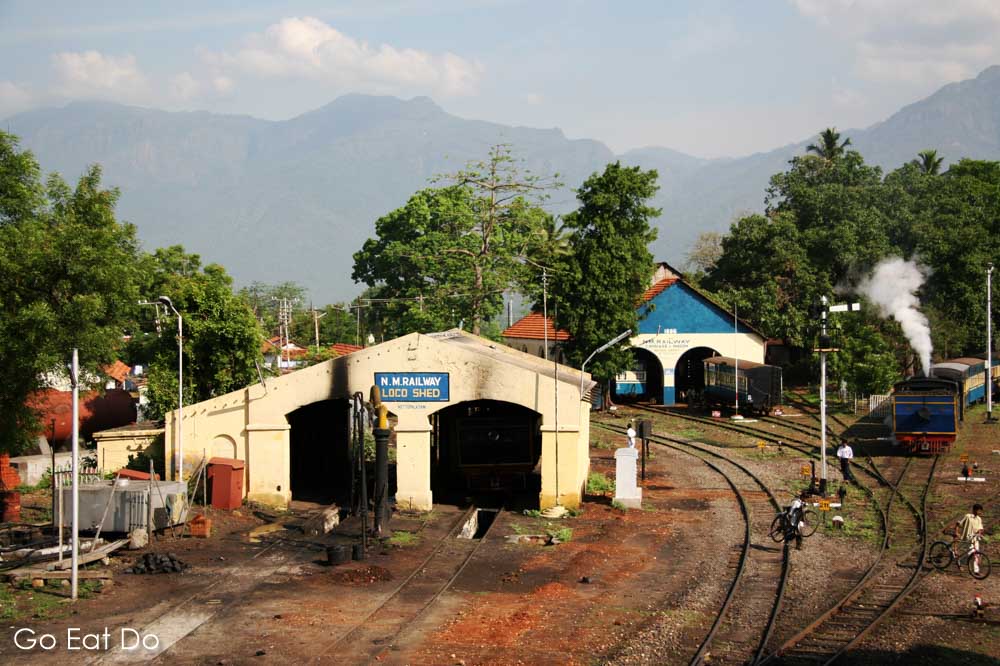
Even the most recently built locomotive has clocked up more than a half-century in service. The oldest debuted during the 1920s. This helps explain why the railway was chosen as a set for David Lean’s film, A Passage to India. The adaption of the 1924 E.M. Forster novel which so graphically captured aspects of Anglo-Indian life during the Raj of the early twentieth century.
The engines chug through plantations at a maximum speed of 30km per hour. The speed, though, is usually closer to walking pace. Passengers rock from side to side, sliding ever so gently on the polished wooden benches of the carriages. From time to time acrid smoke wafts through the open windows, usually when passing through one of the many tunnels.
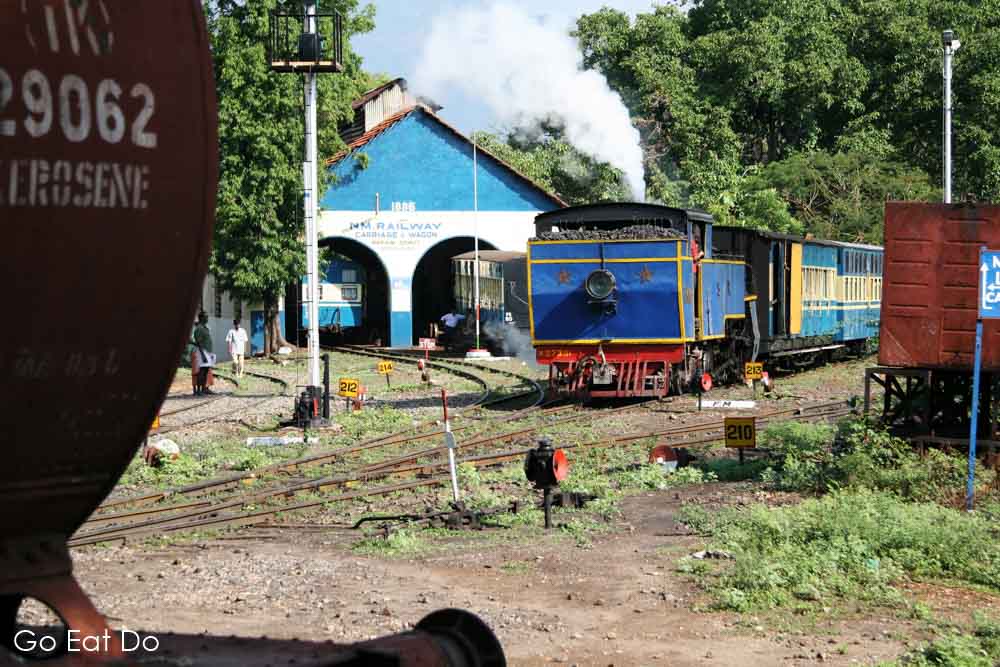
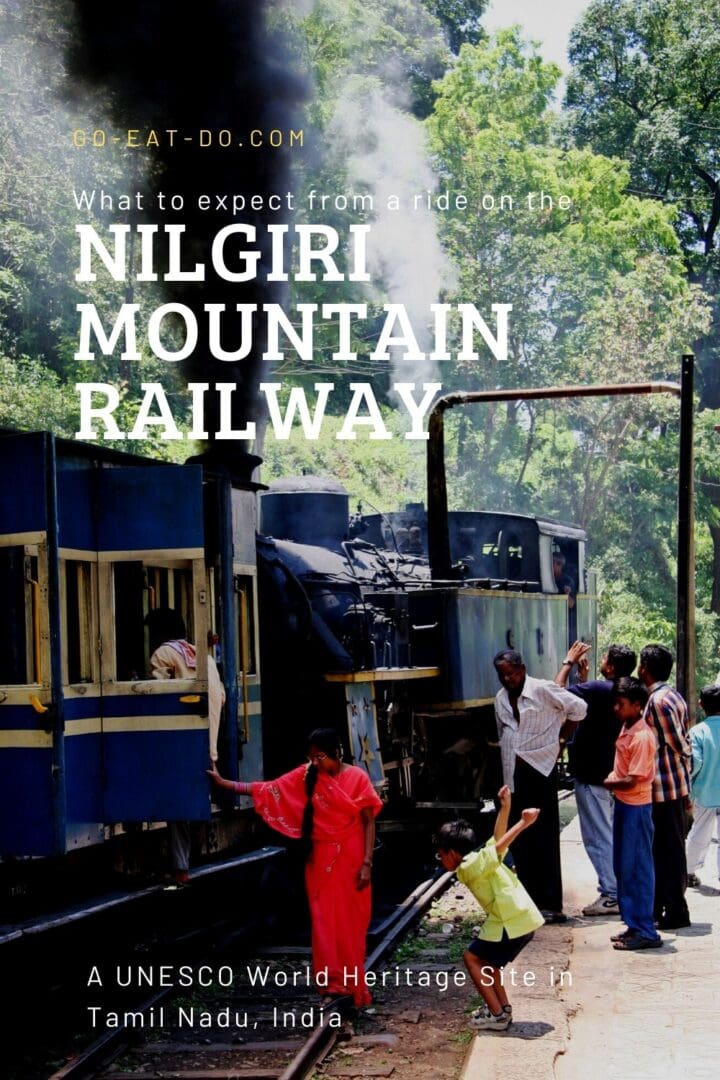
Travel by steam train in Tamil Nadu
The train rocks past stone cottages set among the greenery of the hills. The lush landscape is not dissimilar to that found in parts of Scotland. Stations such as Hillgrove and Runneymede have English-sounding names.
While riding the train it’s easy to imagine that, long ago, many of the British in this distant part of the Empire may have felt pangs of homesickness on seeing scenery so reminiscent of ‘home’. The stations look remarkably similar to some of those built in Yorkshire during the same period. Most folk in Yorkshire would probably be grateful if the platforms of their railway stations were blessed with anything near the hours of sunshine that these in south India see each year.
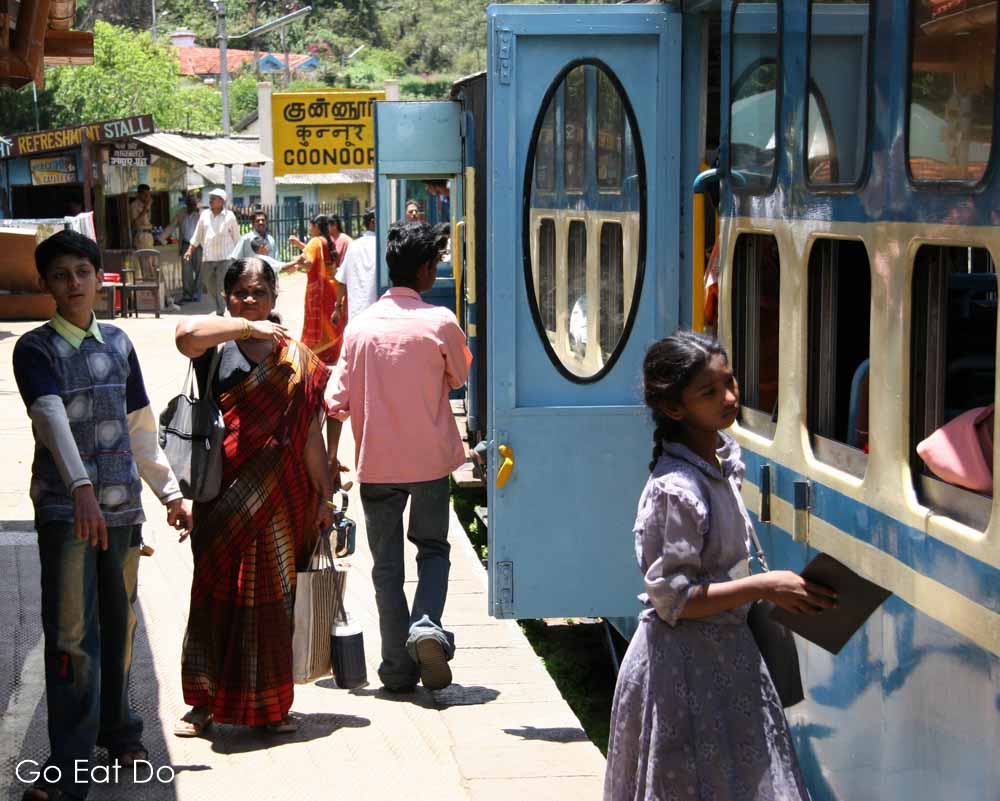
The Nilgiri Mountain Railway is sometimes known as the ‘miniature mountain railway’ or the ‘Nilgiri toy train’ due to its narrow gauge of just 1000 millimetres (3 feet 3 inches, for those of you who think in Imperial measurements). Two similar railways exist in India. One runs to Shimla, the erstwhile summer capital of British India, and the other to Darjeeling.
As with Darjeeling, it was in the business interests of British plantation owners in the Nilgiris to have a railway, in order to transport their produce. Yet it took until June 1899 for a railway to link Coonoor with the markets of the British Empire. Even during the Victorian period — famed for bold engineering projects — bureaucracy and indecision delayed work on the line.
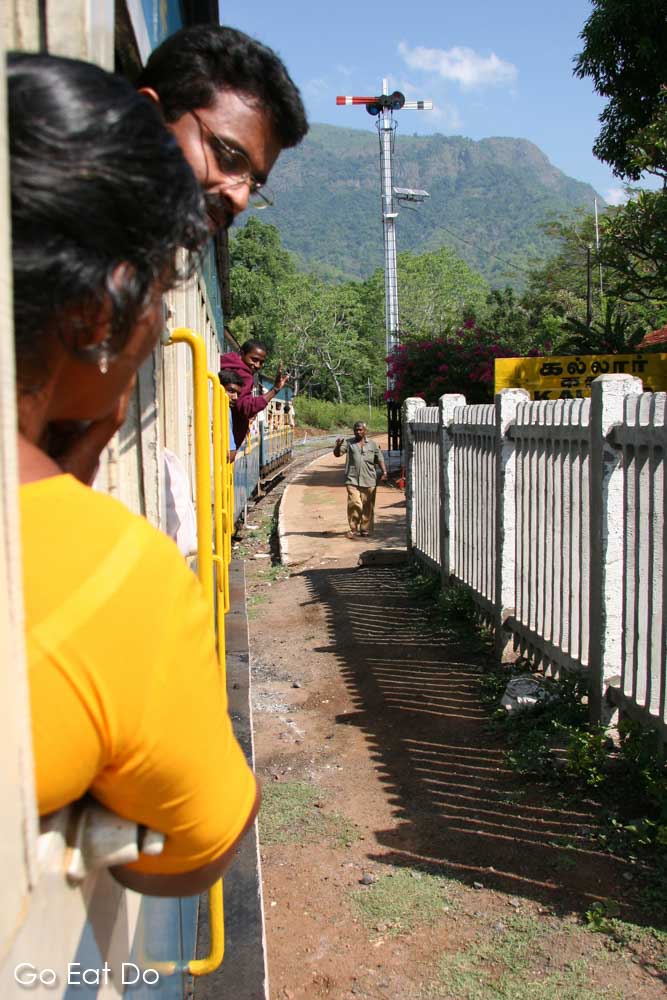
History of the Nilgiri Mountain Railway
Plans for a railway line in the Nilgiri Mountains were initially discussed in 1854. Yet it was not until 1891 that work began on the 27 kilometres (17 miles) of track between Mettupalayam and Coonoor. Swiss consultants recommended that a ‘rack and pinion’ Alternate Biting System should be used to successfully overcome the altitude difference of 1,528 metres (5,013 feet) separating those stations.
Passengers can hear the rattling as cogs grip against the bars set into the track to ensure safe, if not smooth, progress up and down the line. An extension of the railway, from Conoor to Ooty, situated at 2,200 metres (7,228 feet) above sea level, was completed in 1908.
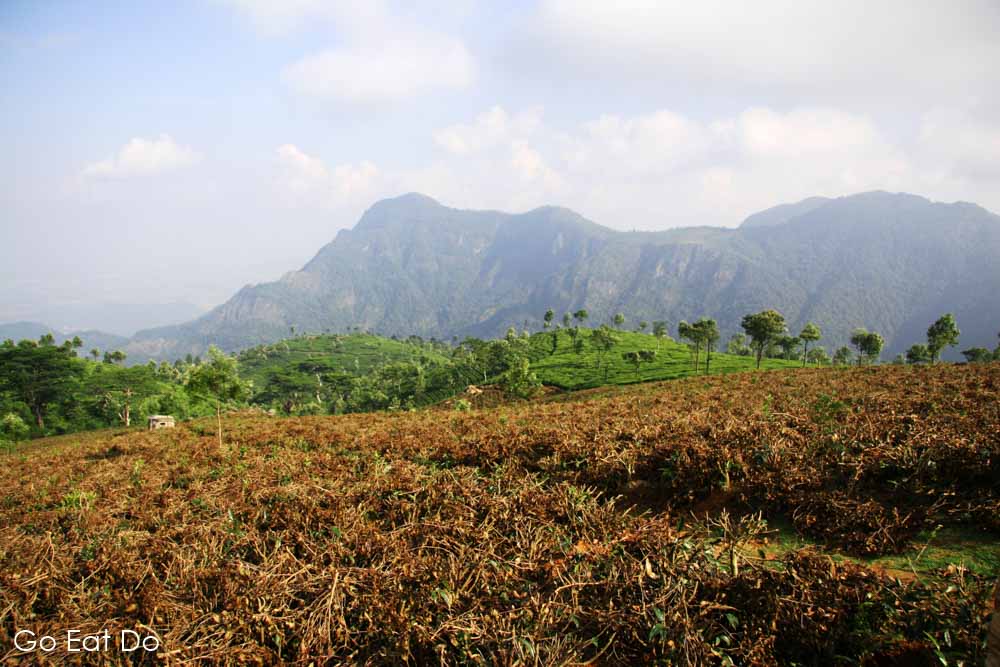
The first Britons to settle in the area arrived more than 80 years prior to that. John Sullivan, widely regarded as Ooty’s founder, traversed the difficult terrain of the Nilgiri Hills in the 1820s purchasing a swathe of land from the Toda tribespeople. He paid one rupee an acre, a rate which some commentators now regard as exploitative. His investment made him a fortune when it became clear that cash crops — such as tea, coffee and spices — thrive in the mild, moist climate of the Nilgiris.
Even now, in an age of global warming, summer temperatures in the higher reaches of the Nilgiris rarely rise above 25°C (77F).
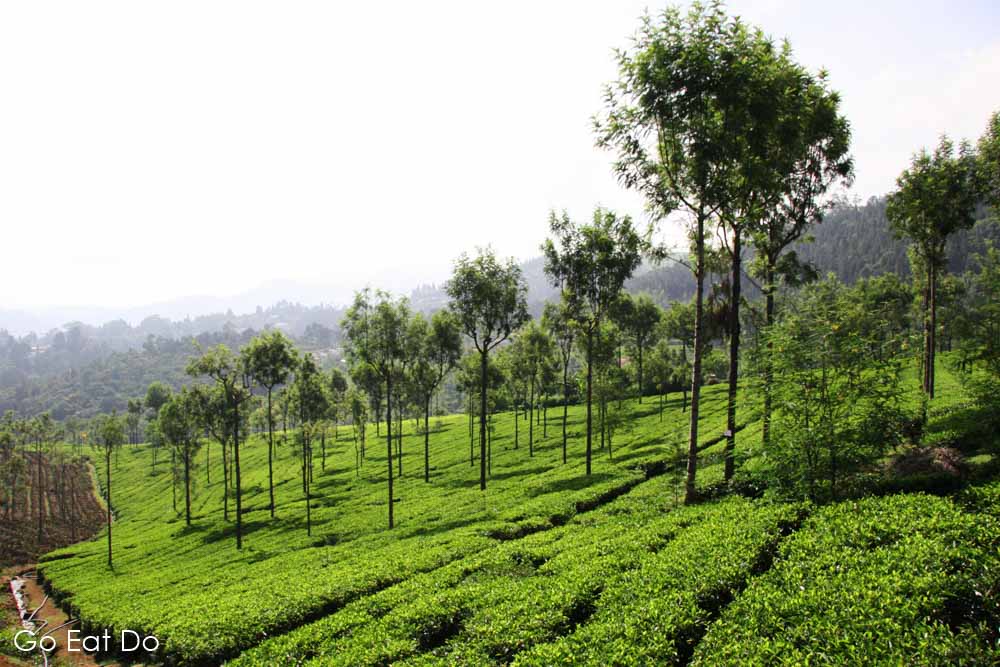
The Queen of Hill Stations
The railway helped improve accessibility to Ooty in the years following 1908. As Ooty’s fame spread it became known as ‘The Queen of Hill Stations’.
A journey along the complete length of the Nilgiri Mountain Railway lasts approximately four hours and fifty minutes on the way up to Ooty. It takes just three and three-quarter hours to descend the line. During that time, several opportunities exist for passengers to climb down from carriages and give their tired posteriors a welcome break from the wooden benches. The stops at Hillgrove, Adderly and Runneymede provide excellent opportunities for enthusiasts to observe how the locomotive takes on water and to photograph and film as the locomotive is refuelled.
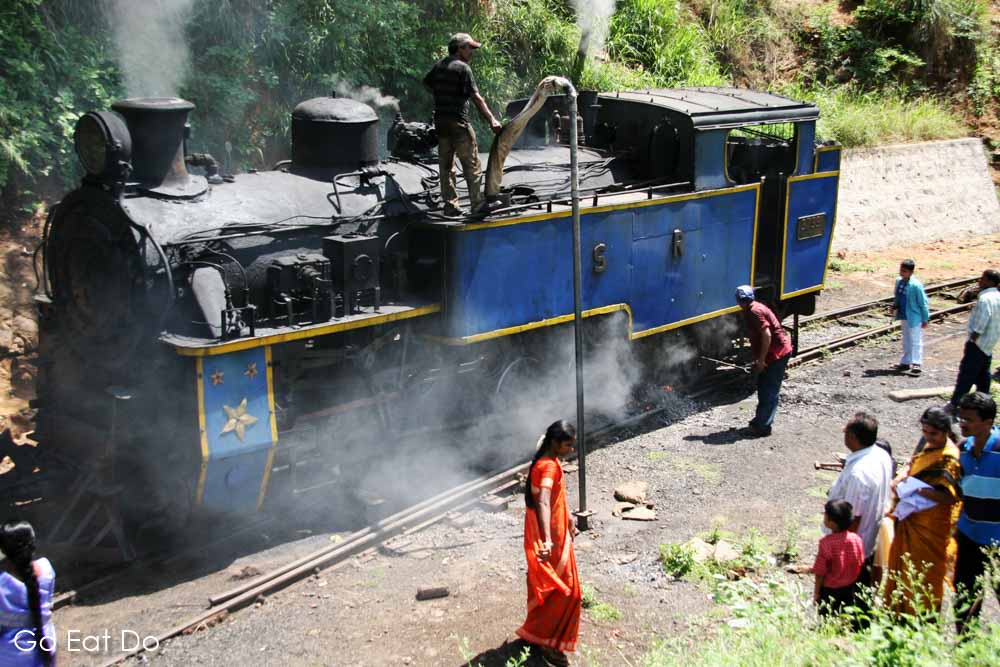
The journey, if you’re a fan of rail journeys, is likely to be one to remember.
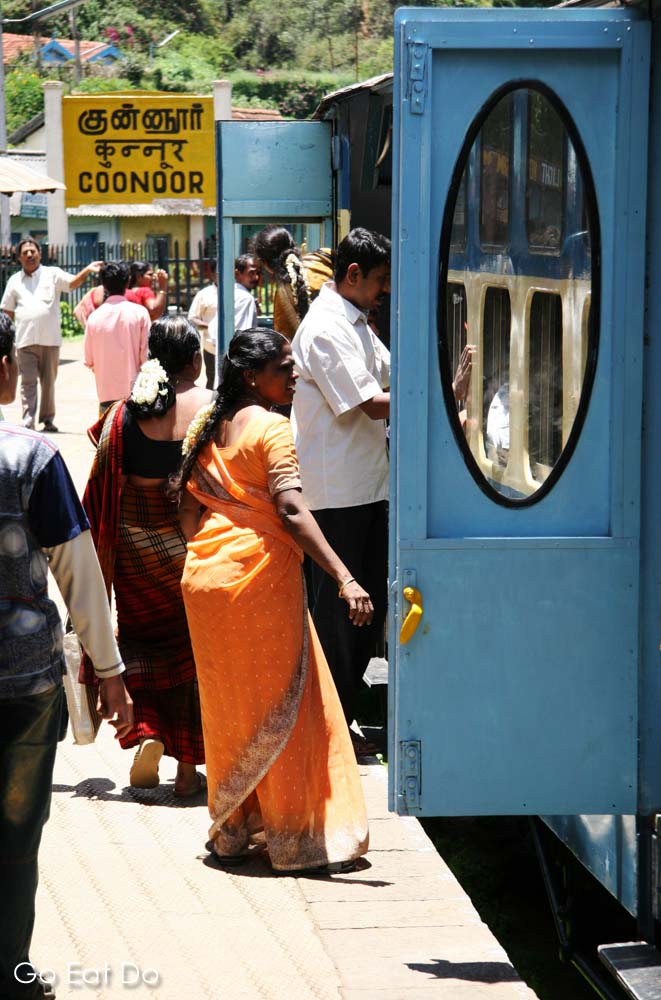
Accommodation in and around Ooty
Looking for a hotel or guest house in or around Ooty in Tamil Nadu? Search Booking.com for accommodation:
Booking.com
Further Information
For more information about travel and tourism in Tamil Nadu and southern India see the Tamil Nadu Tourism and Incredible India! websites. The Ooty Tourism website has information about Nilgiri Mountain Railway departure times and fares.
Book well in advance to guarantee tickets to travel on the Nilgiri Mountain Railway. Alternatively, up to four unreserved tickets per person can be bought at the ticket counters.
Passengers can purchase refreshments at Hillgrove.
Thank you for visiting Go Eat Do and reading this post about the Nilgiri Mountain Railway in southern India. If you enjoy classic rail journeys you may also enjoy reading about the Golden Chariot, the luxury train that visits places of interest in southern India.
Photos illustrating this post are by Why Eye Photography.
If you enjoyed this post why not sign up for the free Go Eat Do newsletter? It’s a hassle-free way of getting links to posts on a monthly basis.
‘Like’ the Go Eat Do Facebook page to see more photos and content.
